I am new to React and would like some help on how to use useEffect(). I have a state machine implemented with Reducer and want to use useEffect() to update the state.
I have such state machine as below. At default the state is set as init and after sendEvent("INITIALIZE") is called the state gets updated to idle. I want to do this process inside useEffect().
But I have a function to be executed before calling sendEvent("INITIALIZE") so the order I want would look like this
- if current state is "init" then call handleInitialize() and wait until it gets executed
- handleInitialize() gets executed and returns a flag
- check the flag and sendEvent("INITIALIZE")
So far I have the following code and it seems that useEffect() can't be an async function
useEffect(() => {
console.log("useEffect() -a");
if (currentState === "init"){
let flag = handleInitialize();
console.log("flag" + flag);
if (flag){
setInitialized(true);
console.log("initialize event INITIALIZE");
sendEvent("INITIALIZE")
}
}
console.log("useEffect() -x");
}, [currentState, sendEvent]);
I have taken a look at React Hook Warnings for async function in useEffect: useEffect function must return a cleanup function or nothing .
I still see the problem even if I wrap this function with async. I tested with the following code
useEffect(() => {
console.log(AppName+":" +"useEffect() -a");
async function update(){
console.log(AppName+":" +"update() -a");
try {
if (currentState === "init"){
let flag = await handleInitialize();
console.log(AppName+":" +"flag" + flag);
if (flag){
setInitialized(true);
console.log(AppName+":" +"initialized event INITIALIZE");
sendEvent("INITIALIZE")
}
}
} catch (error) {}
console.log(AppName+":" +"update() -x");
}
update();
console.log(AppName+":" +"useEffect() -x");
}, [currentState, sendEvent]);
The print out for this is:
ExampleApp:EaxampleApp2: -a
ExampleApp.tsx:128 ExampleApp:switch statement:init
ExampleApp.tsx:94 ExampleApp:useEffect() -a
ExampleApp.tsx:97 ExampleApp:update() -a
ExampleApp.tsx:125 ExampleApp:useEffect() -x
ExampleApp.tsx:102 ExampleApp:flagtrue
ExampleApp.tsx:59 ExampleApp:EaxampleApp2: -a
ExampleApp.tsx:128 ExampleApp:switch statement:init
ExampleApp.tsx:105 ExampleApp:initialized event INITIALIZE
ExampleApp.tsx:59 ExampleApp:EaxampleApp2: -a
ExampleApp.tsx:128 ExampleApp:switch statement:idle
ExampleApp.tsx:120 ExampleApp:update() -x
ExampleApp.tsx:94
I expected to see this order but the output above prints update() -x after useEffect() -x
ExampleApp:useEffect() -a
ExampleApp.tsx:97 ExampleApp:update() -a
ExampleApp.tsx:120 ExampleApp:update() -x
ExampleApp.tsx:125 ExampleApp:useEffect() -x
Please let me know if there is a way to do this.
Thanks,
